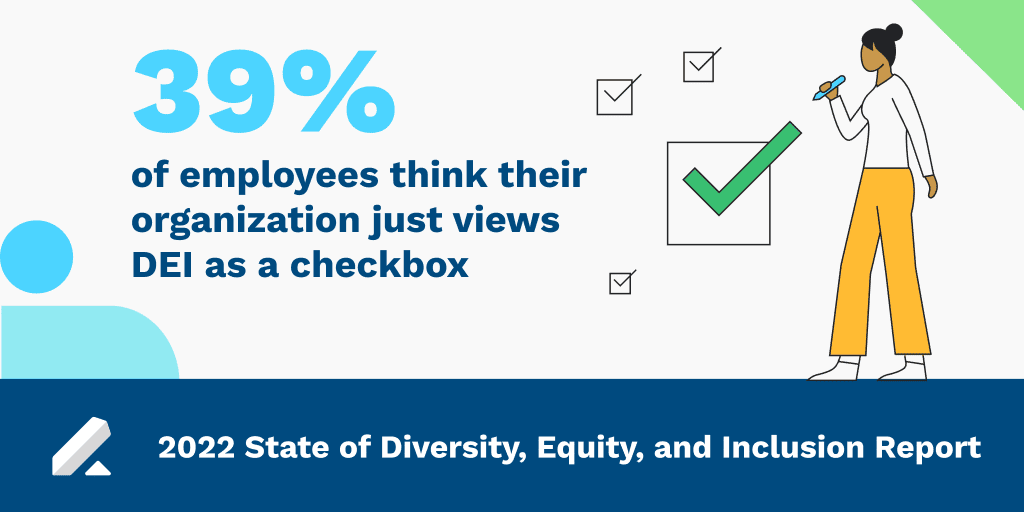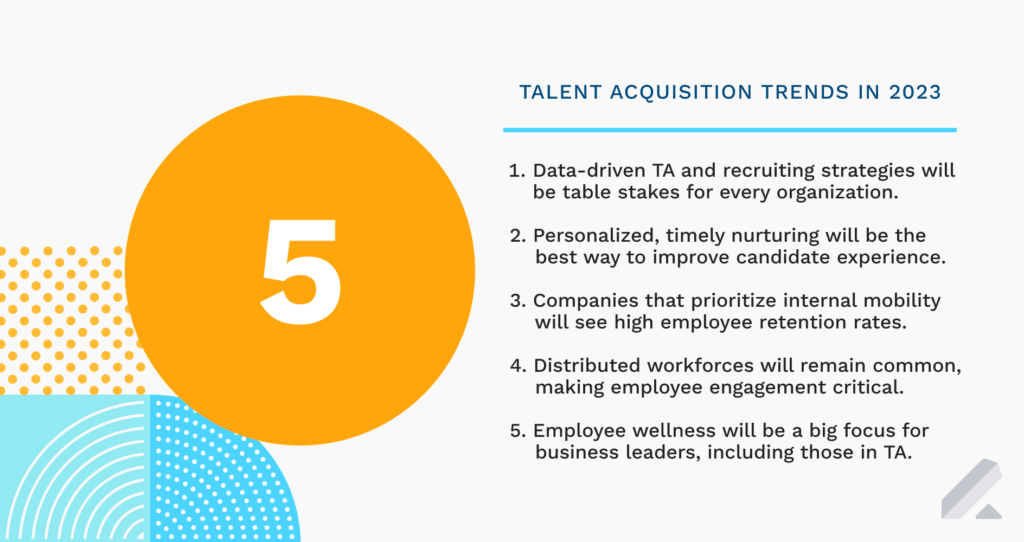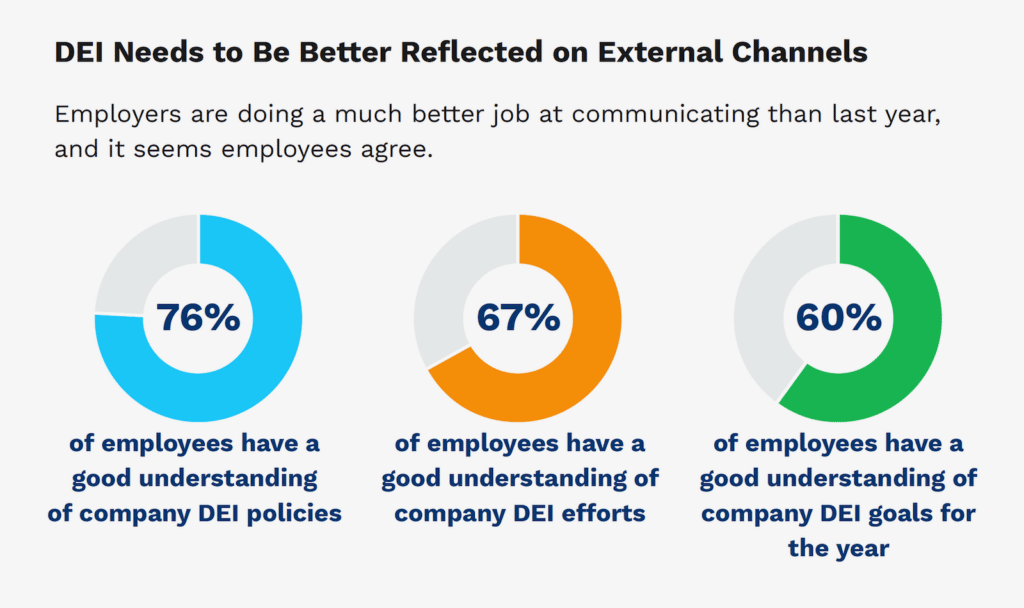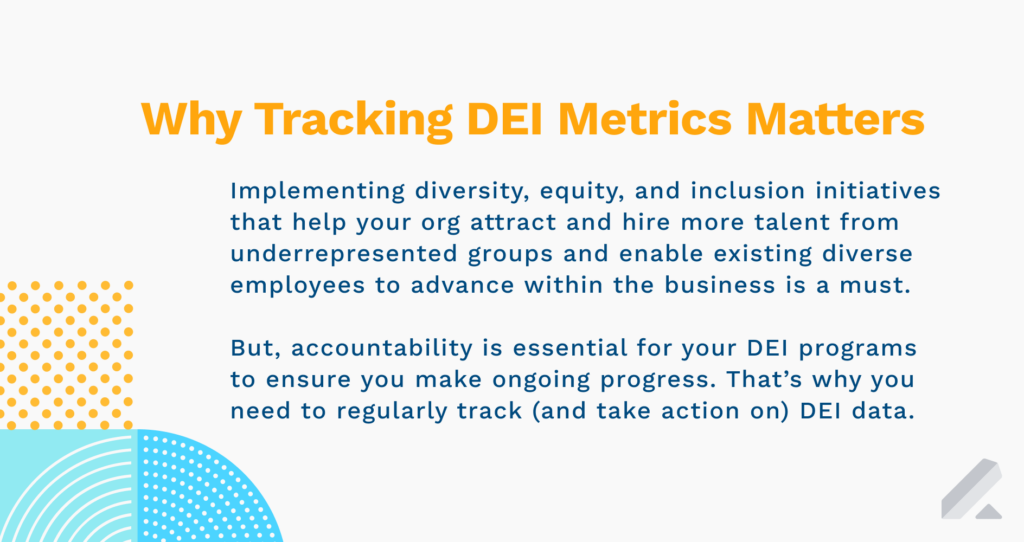Whereas diversity, equity, and inclusion (DEI) was once just a popular buzzword among businesses, today, it’s considered a cornerstone of successful organizations.
In short, the best businesses today are ones that make a concerted effort to:
- Employ more individuals of different races, ages, genders, and gender identities
- Eliminate unconscious bias altogether from their recruiting and hiring processes
- Address mental health concerns by ensuring all employees’ concerns are heard
- Understand the health benefits of offering flexible work environments/schedules
- Establish a multigenerational workforce that leads to greater diversity of thought
Building a diverse and inclusive workplace proven to help companies increase revenue, capture wider market share, and spur innovation. Equally as important, though, it’s also empowered employers to bring their unique perspectives and experiences to their jobs.
That said, there is still a fair amount of work to be done to increase awareness of the importance of DEI for companies across industries — especially in the wake of the COVID-19 pandemic, which led many businesses to deprioritize DEI.

5 DEI trends to watch that are impacting employers’ recruiting and hiring efforts
In our State of Diversity, Equity, and Inclusion Efforts: Progress, Priorities, and Opportunities report, we surveyed over 500 HR decision-makers and 1,000 employees to gauge the progress made with DEI at their businesses.
The research ultimately uncovered a number of interesting and eye-opening diversity and inclusion trends that are not only affecting employers’ retention, but also their talent acquisition teams’ candidate attraction approaches.
1) Companies are changing recruitment processes to advance diversity and inclusion
DEI is not a project or problem to solve. It’s an ongoing, ever-evolving effort that involves every individual at an org and touches nearly every aspect of work.
To see long-term change we need to keep moving forward, measuring results, learning from past results, and course-correcting as needed.
Our research found 79% of employers are actively recruiting, while 20% plan to hire new team members. Those that are actively hiring are striving to achieve greater diversity.
At the same time, just 29% of orgs are offering DEI and bias training to their recruiting teams, and only 28% involve diverse stakeholders in hiring decisions, signaling that there are significant opportunities for improvement in the recruiting remaining.

2) Equity is playing a larger role in recruitment and retention
Long-term success with DEI requires more than just hiring the right people. You have to retain them, too. The talent you hire must be treated fairly and given equal opportunity to succeed.
When you prioritize equity as much as diversity and inclusion, you’re investing in your human capital (your business’s most valuable asset). So, what are employers doing to ensure all their people have equal access and opportunity?
Our research revealed:
- 60% of employers say they have provided accommodations, opportunities, and tools for employees to succeed based on their specific needs
- More than half (51%) say they introduced flexible policies
- 52% also worked to make sure employee pay was equal across titles or positions
Though employers have taken steps toward establishing equity, there’s still room for improvement. Namely, in the areas of expanding benefits and perks, which only 27% of employers say they have introduced, using gender-inclusive language in their employee handbooks (31%), and offering gender-neutral paid family leave (32%).

3) Communicating your DEI initiatives is crucial when hiring and keeping top talent
As we mentioned above, DEI is an ongoing process. It’s not a one-and-done initiative. And it takes buy-in from everyone in your organization to drive progress forward.
However, it’s not only existing employees that need to be aware of your ongoing DEI efforts. Prospective employees should be made aware of this work as well.
Our report found 24% of candidates are looking for more diverse, equitable, and inclusive workplace cultures, and yet, only 23% of employees we surveyed say their employers shared DEI efforts with them during their hiring process.
What’s more, only 27% of employees claim DEI efforts were highlighted throughout their interview process, and just 24% were introduced to ongoing DEI initiatives during onboarding.
Communication and transparency with DEI initiatives are imperative if your org hopes to attract and retain diverse talent — and more talent teams are recognizing this.

4) DEI initiatives are becoming more formalized
Slowly but surely, orgs are making steady progress with their DEI initiatives. But, one DEI trend that emerged through our research is the creation of formal strategies:
- More than half (51%) of employers have formalized a DEI strategy for their org
- 47% have created DEI policies and communicated said policies to employees
- 44% have made actionable changes to hiring policies to bolster their diversity
- 34% offer resources to establish and support employee resource groups (ERGs)
- 40% provide resources, tools, and education or support around DEI for workers
- 32% are developing more standardized change management tactics around DEI
Despite the progress being made, there’s still quite a bit of room for improvement in formalizing DEI strategies and goals, especially from the employee perspective.
One-quarter of employees said their company hasn’t implemented any equity measures, and 24% say the same about inclusion initiatives. Though messaging around diversity has been more effective, 16% of employees say their employer hasn’t communicated to them about it.

5) Measuring DEI is a top concern for recruiting teams and employers
Without measuring the progress of your DEI programs, there’s no way to qualify your efforts or determine which initiatives are making a true impact across your organization.
But, it can be tricky to measure these efforts because DEI permeates every aspect of your business, and some areas could yield more opportunities for improvement than others.
When measuring DEI, our research has found that more HR and talent acquisition teams are proactively leveraging metrics that help them determine their DEI efforts:
- 57% review hiring results to adjust their diversity recruiting efforts
- 48% use employee demographics to adjust their sourcing approaches
- 55% send employee experience surveys to gauge workforce satisfaction
- 37% have regular check-ins with employees to gather job-related insights
Measuring your DEI efforts has become even more imperative as orgs adjust to the new reality of talent acquisition and work. Harnessing analytics from your recruiting, hiring, and onboarding efforts can provide a holistic understanding of your company’s DEI goals and efforts.
Download our latest State of DEI Report to discover more DEI trends impacting employers.



